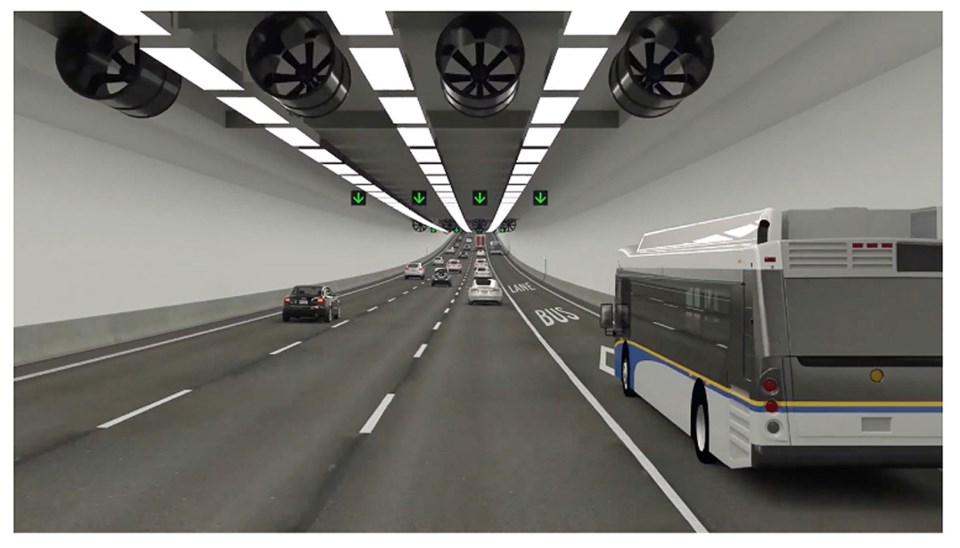It’s a mixed bag when it comes to reaction to the provincial government’s announcement this week that the George Massey Tunnel will be replaced by another tunnel.
The new eight-lane immersed-tunnel is to open in 2030 and have an estimated $4.15 billion price tag.
Saying he’s disappointed the new crossing will not accommodate light rail rapid transit, will be smaller and cost $1.55 billion more than his Liberal government's 10-lane bridge project, Delta South MLA Ian Paton said that had the bridge project gone ahead, which included highway upgrades and future capacity for light rail, it would have been opened by 2022.
“Instead, under the NDP, commuters south of the Fraser must wait a whole decade before they see any relief from congestion,” said Paton. “My constituents have already waited too long, and they deserve better than 3.5 years' worth of environmental assessments and five more years of construction.
“Once again, the NDP prove they would rather pay more for a lot less.”
Delta North MLA Ravi Kahlon, Minister of Jobs, Economic Recovery and Innovation, said his government worked closely with local governments, Indigenous leaders and TransLink to reach the right solution for the region.
Pleased the business case for a new crossing has been released, Delta Mayor George Harvie noted that, even with millions spent in short-term upgrades, the current crossing is not seismically safe and may have to be shut down sooner rather than later.
Harvie also said he’s going to be pushing hard for improved transit.
“With the studies I’ve been doing and talking to the experts at TransLink, the use of the bus is changing rapidly,” said Harvie. “We need to scatter them more and not just keep going to the Bridgeport Station. We need other options for people to get to their places of work throughout Metro Vancouver and we need a transit hub in Delta. My vision has always been that we use the Vancouver Landfill for that, so those are all things I’ll be relentless in pursuing.”
Robin Silvester, president and CEO of the Vancouver Fraser Port Authority, said, “We are pleased to see progress on a tunnel-replacement project that will address traffic bottlenecks and bring travel time reliability to one of the most important north-to-south transportation corridors for commuters, goods movement, cross-border transportation and ferry traffic. Following this exciting announcement, we look forward to working with the Province on the development of the tunnel replacement to ensure the continued safe navigation of marine-vessel traffic along the Fraser River.”
Bridgitte Anderson, president and CEO of the Greater Vancouver Board of Trade, echoed that sentiment.
“Greater Vancouver is Canada's Asia-Pacific gateway, and the George Massey Crossing is a crucial economic artery for the movement of people and goods that our region has long outgrown,” said Anderson. “We welcome this announcement. The business community has been vocal for years in advocating for a solution that will relieve congestion at this critical bottleneck, and it's imperative that all levels of government work co-operatively alongside Indigenous partners to move the project forward in a cost-effective manner without further delay.”
However, Anita Huberman, CEO of the Surrey Board of Trade, expressed disappointment, saying they had advocated for an eight-to-10 lane bridge needed to handle the growing population south of the Fraser.
Tsawwassen First Nation Chief Ken Baird said replacing the aging tunnel to accommodate current and future growth in their corner of the Lower Mainland is critical to building a sustainable and vibrant future for his First Nation.
Baird noted they are pleased the province is taking the TFN’s concerns about this project seriously and committed to addressing concerns about environmental impacts on the river and the fisheries.
As far as suggestions the current tunnel can still be used after the new crossing opens, Bowinn Ma, MLA for North Vancouver-Lonsdale and BC Minister of State for Infrastructure, on social media responded they recently detected ASR (alkali-silica reaction) in the concrete of the existing crossing. It cannot be remediated, so the tunnel will removed.




